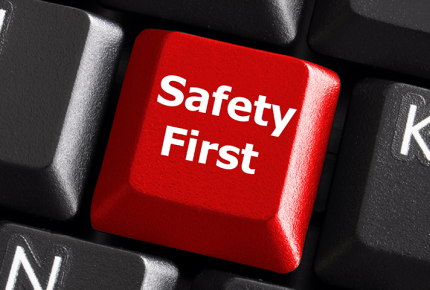
Workplace health and safety in the age of the home office
In early 2020, measures to combat the COVID-19 pandemic shuttered offices around the world, making telework a global norm. While many countries have now come out of lockdown, concern over sanitary risk has led many employers to continue to encourage home working.
As an employer, you are responsible for protecting employees from workplace hazards, even when they are working from home. Organizing large-scale remote risk assessments in the current context is complicated. An effective way to help promote health and safety amongst your newly remote employees – many of whom may never have worked from home – is to communicate the potential hazards, encourage them to assess the risks, and share good practices.
Ergonomics: avoiding back, neck and shoulder pain
Working from the comfort of a home office brings many advantages, but conditions are not usually as ergonomically-friendly as those at offices. Makeshift workstations involving seating with inadequate lumbar support, together with laptops and screens not adjusted to the correct eye height can lead to the most common of office ailments: back pain.
Extended periods of time in the same body position are another common source of workplace injury for remote workers. Employees working from home often don’t take the time to stretch their legs, as opportunities presented by a traditional office environment - think short walks to the printer or discussions with colleagues – no longer exist. Making your teams aware of the benefits of opting for a sturdy chair over the couch, and getting up to take a coffee break, can go a long way.
Stress: making sure employees feel supported
Under the right conditions, remote work can result in increased job satisfaction and employee retention (Forbes, 2020). Remote workers, however, face a unique set of stressors – and these are likely to be more acute as lockdowns to tackle the coronavirus pandemic prevent human-to-human contact outside work.
Feelings of isolation and reduced organizational support can negatively impact employees’ mental health. Working from home can also erode the boundaries between work and personal time, leading employees to work into the night and on weekends, and to neglect taking breaks. Communicating with your employees on guidelines and expectations, and ensuring that they feel supported can help safeguard against psychosocial risks like burnout and other psychosocial consequences. The key is to over-communicate.
Emergency procedures: simple home checks save lives
Many of us aren’t in the habit of conducting regular home fire drills. When implementing telework, however, it can be extremely helpful to remind employees about the basics of emergency preparedness. Many teleworkers, furthermore, may be alone at their homes during work hours, making this all the more important. Do teleworkers’ workspaces have smoke alarms? Carbon monoxide detectors? Remind your employees of these basic requirements, which can keep them safe.
Taking a holistic approach to Health & Safety with ISO 45001
It’s never a bad time to take a comprehensive look at how well you are protecting the health and safety of your employees. An Occupational Health & Safety Management System like ISO 45001 can help your business address risks associated with remote work, and a wide range of other occupational health and safety hazards.
ISO 45001 provides the framework for a comprehensive, integrated approach to occupational health and safety. The standard goes beyond physical safety, encompassing psychosocial risks like burnout, harassment and stress-related illness. Certification to Health & Safety Management System enables businesses to meet their health and safety requirements, and improve productivity and performance.
Bureau Veritas offers a full range of ISO 45001 certification and training services.

